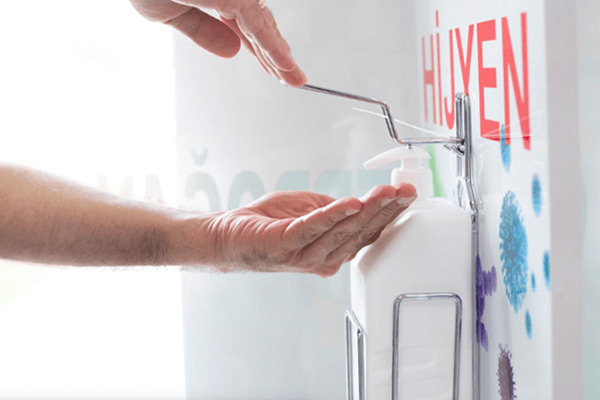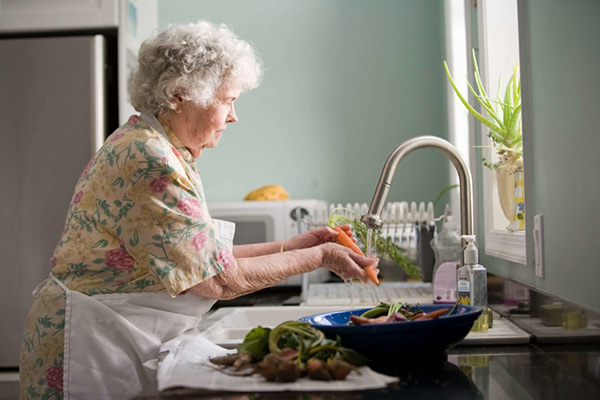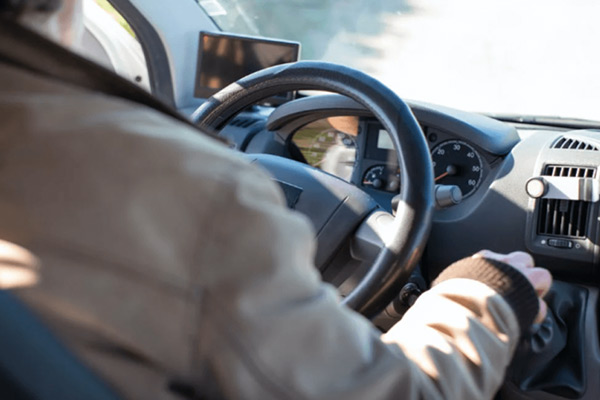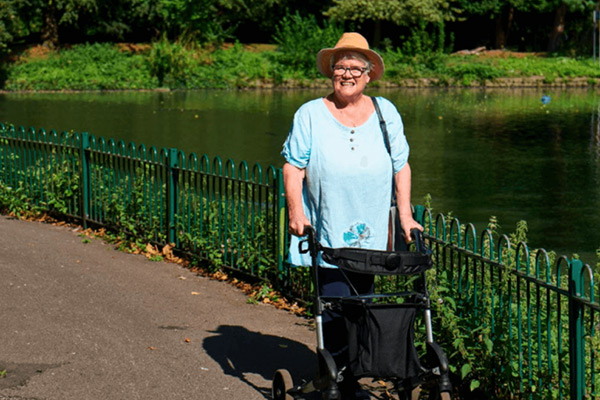No products in the cart.

Exclusive Offer!
Stay safe 24/7 anywhere you go, around town or at home.
Stay safe 24/7 where you spend the most time. Easy to use & affordable.
Turn your smartphone into a personal safety device with this 24/7 monitoring app that’s the ultimate resource for keeping you safe.
Pair it with the Aster app to maximize ease of use and convenience. Click one button to call emergency services.

Learn about assistive devices and how they can help aging adults maintain independent and confident lives.
Summary
Approximately 36 million falls are reported each year, among those aged 65 years and older–a number of those falls result in more than 32,000 deaths.
With so many assistive technologies and personal emergency products available, we can minimize and prevent so many fall-related deaths.
Whether they’re moving from the bathroom to the bedroom, or the kitchen to the car, an assistive device can help your loved ones complete their daily activities with ease.
In this article, we take a closer look at some of the best devices and medical alert systems that can help aging adults live safely and independently.
As we age, health concerns tend to restrict our mobility and independence.
Fortunately, there are assistive devices that can support aging adults in nearly every aspect of their lives.
Assistive devices for the bedroom can help older adults get dressed, sleep soundly, and get in and out of bed independently.
Buttonhooks
These devices help seniors button sleeves, pants, and jackets.
They’re especially helpful when arthritis makes the joints of the fingers too stiff and painful to perform these daily tasks.
Zipper pulls
These typically look like rings and help the wearer grab and pull zippers more easily. They work with pretty much any item with a zipper, for example, pants, jackets, wallets, etc.
Jewelry fasteners
Tiny jewelry hooks found on the neck and arm chains can be particularly difficult to fasten and unfasten. Jewelry fasteners give the wearer assistance with hooking the clasps of bracelets and necklaces.
Bed risers
A bed riser adjusts the height of a bed. These devices can make it easier to get in and out of bed without causing pain in the back and joints.
Orthopedic pillows
Aging adults often struggle with neck and back pain while sleeping. A supportive, orthopedic pillow is a great way to avoid discomfort and help with pain management.
Accidents like slipping in the tub or shower, falling while getting up from the toilet, and other bathroom mishaps are unfortunately very common.
Luckily, safety devices for the bathroom can make it safer and easier to bathe, shower, and perform regular hygiene tasks.

Raised toilet seats
A raised toilet seat attaches to the toilet directly and replaces the standard seat.
This device makes it easier for the user to sit down or get up off the toilet. For those who have had hip surgery or struggle with mobility, this device is especially useful.
Commode chairs
Designed to be placed over the toilet, this raised toilet seat structure comes with bars and handles that support the person in sitting on and rising off of the seat.
Grab bars and railings
Some tubs are fitted with grab bars already, but for those that aren’t, grab bars can be fitted to the wall. They can also be fitted inside the shower and around the bathroom to prevent slips and falls in the bathroom.
Bath seats
A seat in the bathtub or shower is perfect for those who have muscle weakness or hip and knee problems.
By making it easier to get in and out of the bath, the risk of aging adults falling or injuring themselves may be reduced.
Handles and levers
Arthritis and muscle weakness can make it very difficult to open tight faucets.
Replacing faucet knobs on the bathtub, shower, and sink with levers will help those with stiff hands to open and close faucets more easily.
Assistive devices for the kitchen can help aging adults navigate their way around and cook their meals independently.
Many of these devices prevent users from hurting themselves and can help them handle common kitchen items with ease.

Jar or bottle openers
For those with weaker hand muscles or arthritic joints, it can be incredibly challenging to twist off the lids of jars. Manual and electric jar openers help to grab and open jars quickly and easily.
Food processors
Chopping and mixing may cause pain in the hands and wrists. A food processor will not only help with chopping but also grating, blending, and mixing.
Using this device can help avoid activities that may cause pain in the hands and wrist, as well as make cooking easier and more enjoyable.
Adaptive utensils
When it comes to cooking and eating independently, adaptive utensils are specifically designed with longer handles and rubber grips.
These prevent utensils from slipping out of the hand and make cooking and eating more comfortable.
For aging adults with limited mobility, driving can be restrictive and challenging — not to mention a safety concern for their loved ones.
There are several assistive devices available for cars to help operate vehicles more safely.

Key turner
A key turner is a handheld attachment that can act as a keychain for frequently used keys. Because it can be held securely in the fingers, it makes turning keys far easier.
Swivel seat
Whether it’s because of hip issues, painful knees, or a stiff back, for aging adults it can be very difficult to get in and out of the car.
A swivel seat is a round cushion that fits onto the car seat and rotates from left to right. This mobility device is useful as it helps the driver to get in and out of the vehicle.
Rearview Cameras
Many modern cars are already equipped with rearview cameras that help the driver to see behind them without relying solely on the rearview mirror.
Proximity sensors are also popular and make a sound when the driver is too close to an object.
Many drivers struggle with restricted vision. If they wear multifocal glasses, they may only be able to see through a specific area of the lens.
This means that they may need to turn around to see where they are going; which can result in them taking their eyes off the road for a short period of time.
With rearview cameras and proximity sensors in front of them, aging adults are empowered to navigate their cars safely and maintain their independence.

Mobility aids
Sometimes a little assistance can go a long way to make an aging adult feel more comfortable and supported while going about their daily routine.
These simple mobility devices include:
Electric wheelchairs
As opposed to traditional wheelchairs, electric wheelchairs allow the user to maneuver with less effort to maintain mobility.
There is less of a need to rely on upper body strength or strong arms to move around. Electric wheelchairs are ideal for many aging adults or for those with health conditions that cause physical challenges and limitations.
Screen enlargement applicators
As we age, our eyesight tends to worsen. Screen enlargers magnify the screens of computers, tablets, and mobile phones for easier viewing.
There are also many helpful technologies entering the market that make for a far easier and safer lifestyle for seniors.
In the section below, we’ll take a closer look at a few of the modern technologies helping elderly people lead more independent lives.

Automatic pill dispensers
Medication reminders alert the user with a sound and blinking light when it’s time to take their daily medications–a press of a button releases the dose of medicine.
This helps ensure that aging adults don’t forget to take their medication, enabling them to manage their health more effectively.
Video doorbells
A video doorbell allows users to get a view of an outdoor camera through their mobile phones.
By allowing aging adults to see who is at their front door, ahead of time, they are less susceptible to being a victim of scams or crime and will be more hesitant to open the door.
Amplified phones
Designed for people who are fully or partially hearing impaired, an amplified phone allows the user to turn up the volume as needed to hear the other person clearly.
This can be especially useful when speaking with a loved one and critical when communicating with a 911 operator during an emergency.
Fall buttons and detectors
For aging adults that are prone to falls, a fall button or a fall detector mobilizes help with or without the user having to press a call button.

One of the major challenges that prevent aging adults from leading independent and fulfilled lives is their connection with friends and loved ones — particularly if they need urgent help.
Many adults over 65 struggle to reach a mobile phone to call for help when something goes wrong, causing them to feel vulnerable, distressed, and anxious.
Medical alert systems allow those who need them to lead safer, independent, and confident lives—and their loved ones to breathe easier.
These systems allow aging adults to age in place for longer — which can be better for their mental and physical health when properly supported.
A medical alert system is a device that helps aging adults feel safer and more independent.
These products or devices are typically worn around the neck or on the wrist. They connect to a base station and/or directly to the user’s selected contacts or 911.
It allows the user to contact someone at the press of a button when they need immediate help.
A medical alert system is a wireless communication tool that may consist of two components: the main unit, which is carried at all times by the user, and a base station or docking station.
The main unit sends a signal to the base station when it’s activated. This will then send an alert to people linked to the user’s device, such as family members, friends, or 911. In some cases, mobile medical alert systems are standalone pendants. Meaning that the pendant is an all-in-one base unit, charger, and communication method.
When deciding on a medical alert system, two key factors need to be considered. The first is the cost of the device and whether there is an attached monthly subscription.
There are options that include a larger initial purchase price as well as others with a monthly subscription fee for both the device and monitoring service.
It is important to consider what is personally afford to pay for a monthly monitoring service.
There are medical alert systems without monitoring, these devices contact 911 or loved ones directly and decrease the overall and monthly cost of ownership.
The individual’s lifestyle needs to be considered, too.
If the user is active and leaves the home for errands or social activities, an on-the-go option that connects to cellular networks may be better than an around-the-home landline-connected device.
It is important to consider all of these factors when choosing the perfect medical alert system:
LogicMark medical alert systems provide complete peace of mind, by ensuring that your loved one has immediate access to help in the event of an emergency.
Our products are reliable and water-resistant, they can even be taken into the bathroom. The Guardian Alert 911 and Freedom Alert are around-the-home options. They connect through a traditional landline and the base unit can receive signals from the pendant within a 600-foot range. (That’s more than the length of a football field!)
Our devices are programmed to contact emergency services or loved ones at the press of a button, for a one-time purchase price. No monthly fees!
Ordering a LogicMark device is a smart decision for anyone wanting to ensure the complete safety of their loved ones. See our FAQ page to learn more about our medical alert devices, or visit our shop and choose the option best suited to the needs of you and your loved one.

For many aging adults, a medical alert device is a key tool in helping them age in place safely and independently. But not all devices are created equal. One essential feature that can make a major difference

Spending time outside is one of the best ways to boost both physical and mental well-being

When a medical emergency strikes, every second counts. Whether it’s a fall, heart attack, stroke, or another critical event

Medical alert devices can be life-saving tools for seniors, providing quick access to emergency help when needed. However, convincing older adults to adopt these devices isn’t always easy.
QUICK LINKS
RESOURCES